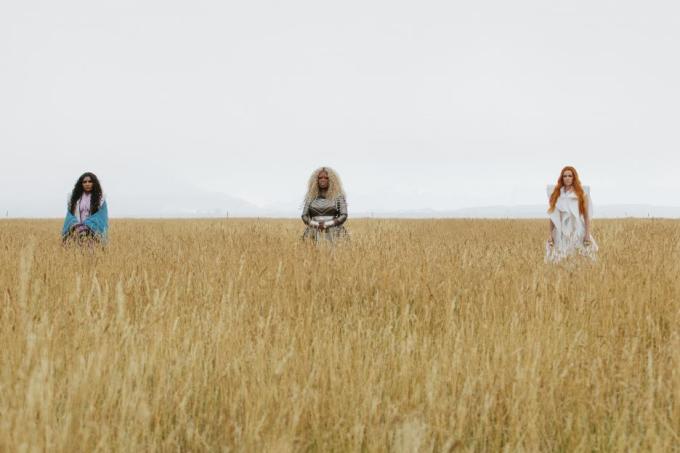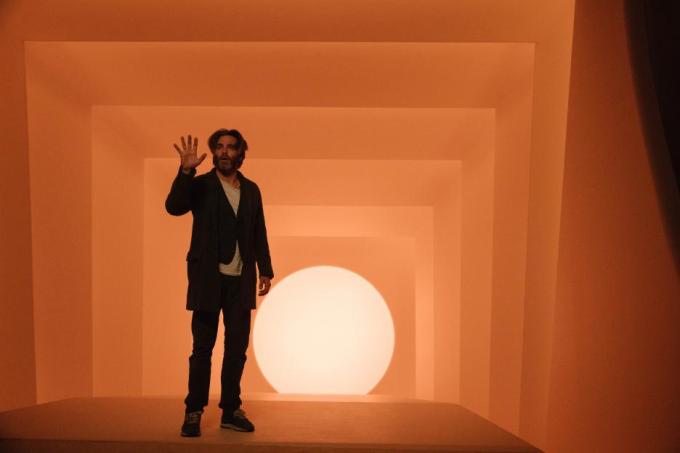A Wrinkle in Time was one of my favorite books as a kid. I read it over and over, then tracked down the sequels and gobbled up many more of Madeleine L’Engle’s fantasy- and science fiction-tinged novels for young adults.
But I hadn’t touched it in more than 20 years, maybe closer to 30, when the excitement began to build around a new Disney adaptation directed by Ava Duvernay. A few months ago, I finally returned to the story of Meg Murry and her interplanetary search for her father, a scientist who’s disappeared under mysterious circumstances.
What I realized is that A Wrinkle in Time is a very weird book. It combines supernatural fantasy and interstellar travel with a strong dose of L’Engle’s Christianity; it treats characters’ encounters with strange aliens and their sincere discussions of God’s plan for the universe with equal seriousness. And again, this is all in the guise of a novel for children.
Plus, it moves so quickly. The initial scenes, which introduce of Meg and her family, move at a relatively leisurely pace, but once we meet the mysterious visitors Mrs. Whatsit, Mrs. Who and Mrs. Which, and once they’ve explained how they travel by tesseract, it’s only a couple of pages before Meg and her friends are “tessered” beyond the solar system. Then, after just a few more pages of travel and exposition, they arrive on the mysterious planet of Camazotz, where they must enter a sinister, totalitarian society and find Meg’s father.
So maybe it’s not surprising that more than 50 years passed before the novel was adapted into a big budget feature film, or that critics and audiences seem to have been underwhelmed by the movie. How could anyone, particularly someone hoping to sell millions of tickets, successfully capture L’Engle’s idiosyncratic vision?
Some of the book’s flaws have simply been carried over to the screen — the plotting can feel arbitrary and thin, and the whole thing wraps up rather anticlimactically.
Meanwhile, the adaptation creates problems of its own. For one thing, it may have been inevitable that the film would cut the book’s overt Christianity, but without it, the discussion of good and evil feels particularly generic and treacly.
For another, Meg’s younger brother Charles Wallace was always going to be a tough sell. But at least in the book, his intelligence seems a genuinely unsettling. The movie, on the other hand, transforms him into just another cute prodigy, one whose constant, cheerful explanations had me gritting my teeth.
More broadly, as a reader, especially a young reader, I could swallow most of the book’s implausibilities, thanks to L’Engle’s simple style — I rarely questioned her narrative choices, just as I wouldn’t cross-examine the logic of a bedtime story. But blown up on-screen, with big stars and fancy special effects, the silliness seems harder to ignore.
To make matters worse, the elegance of L’Engle’s storytelling is sometimes swapped out for conventional Hollywood drama, a change exemplified by the film’s explanation of tesseracts — what was an easy-to-follow conversation in the book, complete with unforgettable pen-and-paper diagrams, has become a technobabble-filled PowerPoint presentation at a scientific symposium.
But even though I wanted to like the film more, I still can’t write it off completely, I can’t deny that Duvernay has made a real attempt to capture the book’s strange beauty. In its best moments, the movie’s Camzotz is just as eerie as the book’s. And while it may seem odd or even laughable to see Oprah towering over the other characters as a giant version of Mrs. Which, or to watch as Reese Witherspoon’s Mrs. Whatsit morphs into a enormous, flying vegetable, it’s also beautiful, daring and weird in a way that feels true to L’Engle.
And while I assumed that Wrinkle was inherently a story tied to the 1950s, Duvernay’s adaptation shows the core narrative to be surprisingly durable and adaptable. L’Engle’s (implicitly) white cast of characters and their home in the New England countryside have been replaced by a biracial family (Chris Pine and Gugu Mbatha-Raw play Meg’s parents) in 21st century urban America, but somehow, it all still feels like A Wrinkle in Time.
And Meg’s pain, her prickly intelligence and her bravery in the face of Camzotz’s evil have all made the transition intact. They feel as real, and as resonant, as they did when I first encountered them decades ago.
Featured Image: Disney




